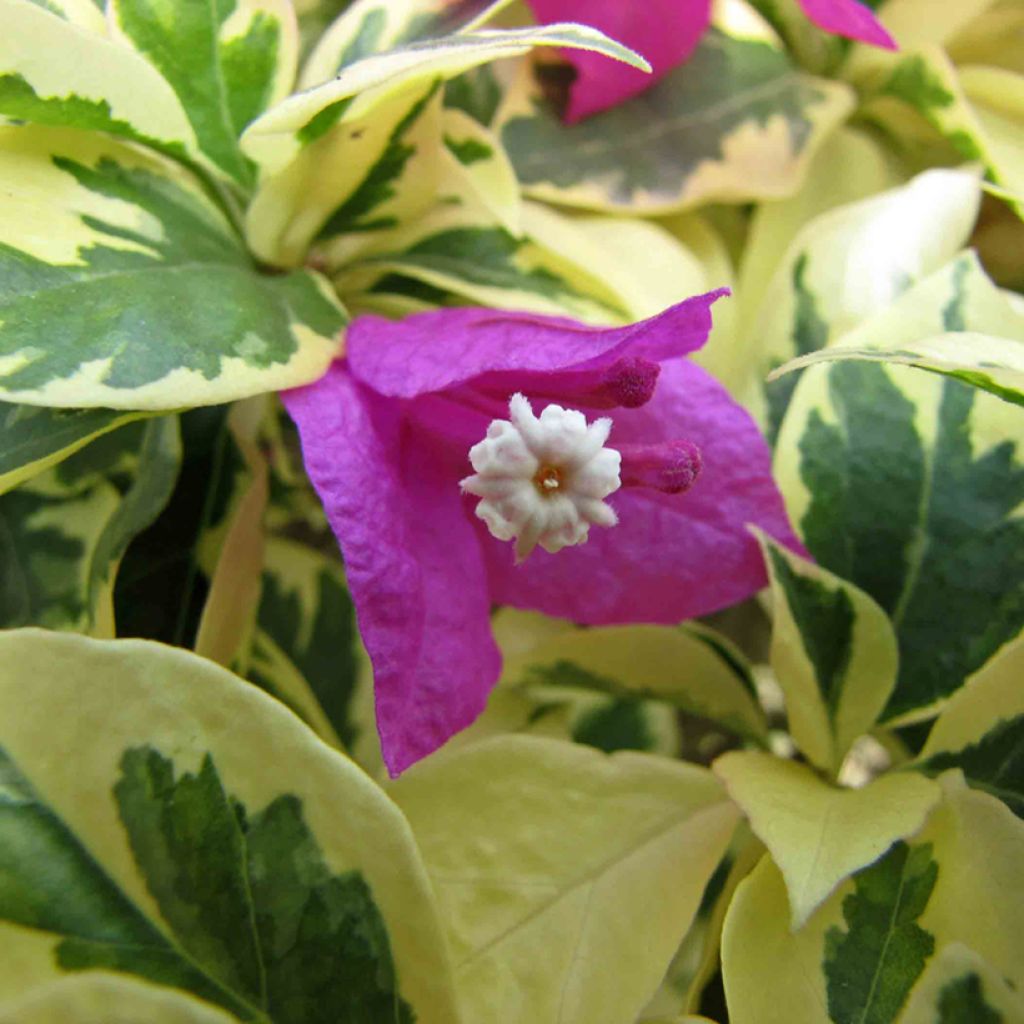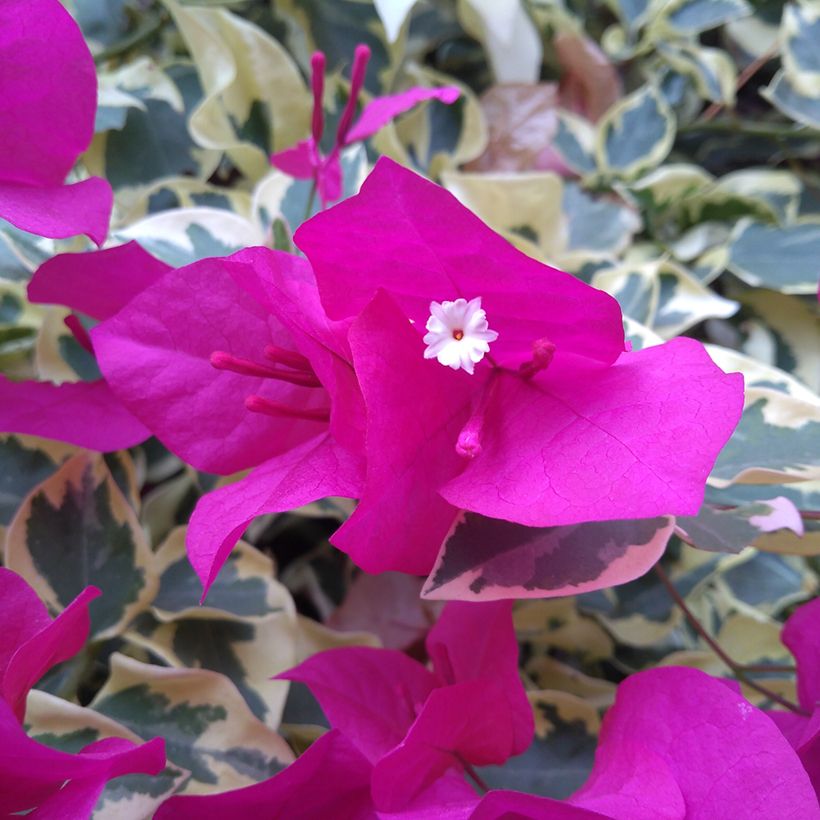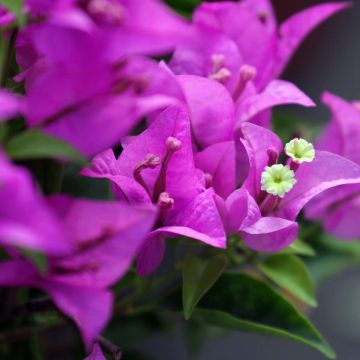

Bougainvillier glabra Variegata


Bougainvillier glabra Variegata


Bougainvillier glabra Variegata
Bougainvillea glabra Variegata
Bougainvillea glabra Variegata
Paperflower
Special offer!
Receive a €20 voucher for any order over €90 (excluding delivery costs, credit notes, and plastic-free options)!
1- Add your favorite plants to your cart.
2- Once you have reached €90, confirm your order (you can even choose the delivery date!).
3- As soon as your order is shipped, you will receive an email containing your voucher code, valid for 3 months (90 days).
Your voucher is unique and can only be used once, for any order with a minimum value of €20, excluding delivery costs.
Can be combined with other current offers, non-divisible and non-refundable.
Why not try an alternative variety in stock?
View all →This plant carries a 6 months recovery warranty
More information
We guarantee the quality of our plants for a full growing cycle, and will replace at our expense any plant that fails to recover under normal climatic and planting conditions.
Would this plant suit my garden?
Set up your Plantfit profile →
Description
Bougainvillea glabra 'Variegata' is a beautiful variety with variegated foliage, derived from this climbing plant which is perfect for exotic and Mediterranean gardens. Being one of the most spectacular plants, the sight of a Bougainvillea in full bloom is unforgettable. From spring to the end of summer, the plant is covered with vivid pink-violet inflorescences, consisting of coloured bracts surrounding a discreet white flower. An additional advantage is that the green foliage margined with white is decorative all year round. As a climbing plant, this Bougainvillea can be maintained as a bush through appropriate pruning, or simply trained on a trellis. Outside of the sunniest and most sheltered coastal gardens, it can be grown in a pot and stored in a cool and bright place during winter, keeping it frost-free.
Bougainvillea glabra 'Variegata', better known as Bougainvillea, belongs to the Nyctaginaceae family, just like Mirabilis jalapa. The species is native to the tropical forests of Brazil. It is the origin of many cultivars and recent hybrids. It is also the most commonly used species for bonsai cultivation. Bougainvillea glabra 'Variegata' is a climbing shrub with relatively slow growth, whose long branches cling to their support through woody and hooked spines. Under favourable conditions, the plant will reach 4 meters (13 feet) in height with a spread of about 2 metres (7 feet), but these dimensions will be more modest if it is grown in a pot and pruned to maintain compactness. It is possible to shape it into a branched plant in a large container. The leaves are entire, ovate and rounded, with a cordate base, glabrous, slightly soft in texture and a bright medium green colour, with a beautiful white variegation in the form of a more or less wide and irregular margin around the petiole, and can also extend into the lamina. This bright foliage is decorative all year round. The flowers bloom from May to September on 2-year-old branches. Grouped in panicles, they are small white tubular flowers, highly appreciated by pollinating insects. In reality, it is the bracts that surround them, which are medium size, 4 to 6 cm (2in) and a vivid pink-violet colour, that are admired. Their delicate and wavy texture is reminiscent of tissue paper (in English, this flower is called the Paper Flower). Bougainvillea is not very hardy, only tolerating brief frosts of around -3°C (26.6°F).
Bougainvillea glabra 'Variegata' combines the exuberance of the flowering of its counterparts with the appeal of beautiful variegated foliage. Under climates that allow outdoor cultivation, it can be paired with other ornamental plants that are sensitive to cold, such as Cestrum elegans 'Rubrum', another shrub with a very long flowering period, in the form of red clusters composed of small tubular flowers. Tibouchina semidecandra with its incredible violet flowers from July to October will also be a good companion to create a tropical scene.
Report an error about the product description
Bougainvillea glabra Variegata in pictures




Plant habit
Flowering
Foliage
Botanical data
Bougainvillea
glabra
Variegata
Nyctaginaceae
Paperflower
Cultivar or hybrid
Other Bougainvillea
View all →Planting and care
Plant Bougainvillea in open ground: in spring, after the last frost.
This Bougainvillea Variegata can be planted in warm regions that are not affected by frost below -2/-3 °C.
Whether in a pot or in open ground, Bougainvillea requires maximum sunlight, a light, well-drained soil without excess limestone. The optimum pH is between 5.5 and 6.5. During planting, in spring, we recommend mixing two-thirds compost with one-third garden soil. Bougainvillea is a plant that prefers drier soil and can tolerate drought once well established. A less watered Bougainvillea will have more flowers, but its growth will be slower. Water regularly during the growing season. Allow the soil to dry between waterings. In winter, reduce the frequency of watering.
Feeding is not absolutely necessary, except in depleted soil. During the growing and flowering season, generally from spring to the end of summer, you can apply a fertiliser (low in nitrogen). We recommend a base fertilizer with 1N (nitrogen unit), 0.75 P (phosphorus unit), 2.5 K (potassium unit). Stop feeding during the vegetative rest period, in winter.
Bougainvillea can be trained according to your preferences. As groundcover, let nature take its course. This bush requires support to climb. You can train it on a trellis fixed to a wall or an arch, by regularly winding the young, thin and flexible shoots around the support. Use flexible, non-metallic ties to attach the branches. Be careful, some varieties have very thorny stems!
Prune sparingly: pruning should be done in late winter, when the plant starts growing again. It should be light to not hinder the plant's growth. It is preferable to bend the branches horizontally or towards the ground. This technique effectively stimulates branching.
Pot planting for indoor use:
For most varieties, it is preferable to plant them in pots so that they can be brought indoors before autumn, to protect them from the cold. In a pot, you can keep your plant on a veranda,or in a window. Choose a quality, light and fibrous potting soil, rich in turf. Water regularly during the growing season and apply a fertiliser with 1N (nitrogen unit), 0.75 P (phosphorus unit), 2.5 K (potassium unit). Allow the soil to dry between waterings. In winter, reduce the frequency of watering and stop feeding.
Planting period
Intended location
Care
This item has not been reviewed yet - be the first to leave a review about it.
Similar products
Haven't found what you were looking for?
Hardiness is the lowest winter temperature a plant can endure without suffering serious damage or even dying. However, hardiness is affected by location (a sheltered area, such as a patio), protection (winter cover) and soil type (hardiness is improved by well-drained soil).

Photo Sharing Terms & Conditions
In order to encourage gardeners to interact and share their experiences, Promesse de fleurs offers various media enabling content to be uploaded onto its Site - in particular via the ‘Photo sharing’ module.
The User agrees to refrain from:
- Posting any content that is illegal, prejudicial, insulting, racist, inciteful to hatred, revisionist, contrary to public decency, that infringes on privacy or on the privacy rights of third parties, in particular the publicity rights of persons and goods, intellectual property rights, or the right to privacy.
- Submitting content on behalf of a third party;
- Impersonate the identity of a third party and/or publish any personal information about a third party;
In general, the User undertakes to refrain from any unethical behaviour.
All Content (in particular text, comments, files, images, photos, videos, creative works, etc.), which may be subject to property or intellectual property rights, image or other private rights, shall remain the property of the User, subject to the limited rights granted by the terms of the licence granted by Promesse de fleurs as stated below. Users are at liberty to publish or not to publish such Content on the Site, notably via the ‘Photo Sharing’ facility, and accept that this Content shall be made public and freely accessible, notably on the Internet.
Users further acknowledge, undertake to have ,and guarantee that they hold all necessary rights and permissions to publish such material on the Site, in particular with regard to the legislation in force pertaining to any privacy, property, intellectual property, image, or contractual rights, or rights of any other nature. By publishing such Content on the Site, Users acknowledge accepting full liability as publishers of the Content within the meaning of the law, and grant Promesse de fleurs, free of charge, an inclusive, worldwide licence for the said Content for the entire duration of its publication, including all reproduction, representation, up/downloading, displaying, performing, transmission, and storage rights.
Users also grant permission for their name to be linked to the Content and accept that this link may not always be made available.
By engaging in posting material, Users consent to their Content becoming automatically accessible on the Internet, in particular on other sites and/or blogs and/or web pages of the Promesse de fleurs site, including in particular social pages and the Promesse de fleurs catalogue.
Users may secure the removal of entrusted content free of charge by issuing a simple request via our contact form.
The flowering period indicated on our website applies to countries and regions located in USDA zone 8 (France, the United Kingdom, Ireland, the Netherlands, etc.)
It will vary according to where you live:
- In zones 9 to 10 (Italy, Spain, Greece, etc.), flowering will occur about 2 to 4 weeks earlier.
- In zones 6 to 7 (Germany, Poland, Slovenia, and lower mountainous regions), flowering will be delayed by 2 to 3 weeks.
- In zone 5 (Central Europe, Scandinavia), blooming will be delayed by 3 to 5 weeks.
In temperate climates, pruning of spring-flowering shrubs (forsythia, spireas, etc.) should be done just after flowering.
Pruning of summer-flowering shrubs (Indian Lilac, Perovskia, etc.) can be done in winter or spring.
In cold regions as well as with frost-sensitive plants, avoid pruning too early when severe frosts may still occur.
The planting period indicated on our website applies to countries and regions located in USDA zone 8 (France, United Kingdom, Ireland, Netherlands).
It will vary according to where you live:
- In Mediterranean zones (Marseille, Madrid, Milan, etc.), autumn and winter are the best planting periods.
- In continental zones (Strasbourg, Munich, Vienna, etc.), delay planting by 2 to 3 weeks in spring and bring it forward by 2 to 4 weeks in autumn.
- In mountainous regions (the Alps, Pyrenees, Carpathians, etc.), it is best to plant in late spring (May-June) or late summer (August-September).
The harvesting period indicated on our website applies to countries and regions in USDA zone 8 (France, England, Ireland, the Netherlands).
In colder areas (Scandinavia, Poland, Austria...) fruit and vegetable harvests are likely to be delayed by 3-4 weeks.
In warmer areas (Italy, Spain, Greece, etc.), harvesting will probably take place earlier, depending on weather conditions.
The sowing periods indicated on our website apply to countries and regions within USDA Zone 8 (France, UK, Ireland, Netherlands).
In colder areas (Scandinavia, Poland, Austria...), delay any outdoor sowing by 3-4 weeks, or sow under glass.
In warmer climes (Italy, Spain, Greece, etc.), bring outdoor sowing forward by a few weeks.
















































